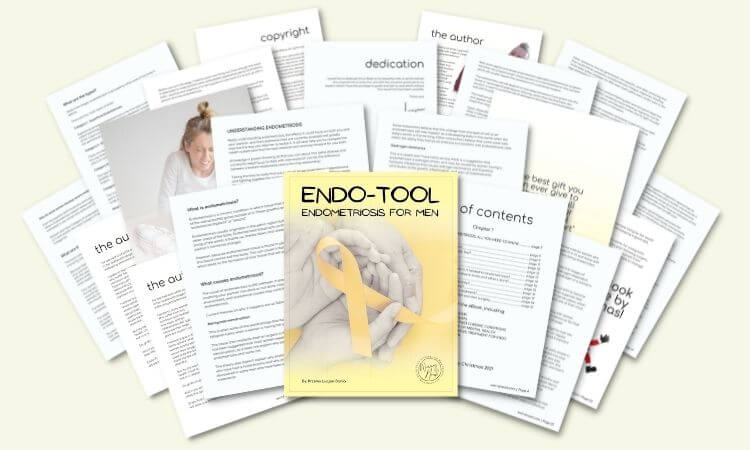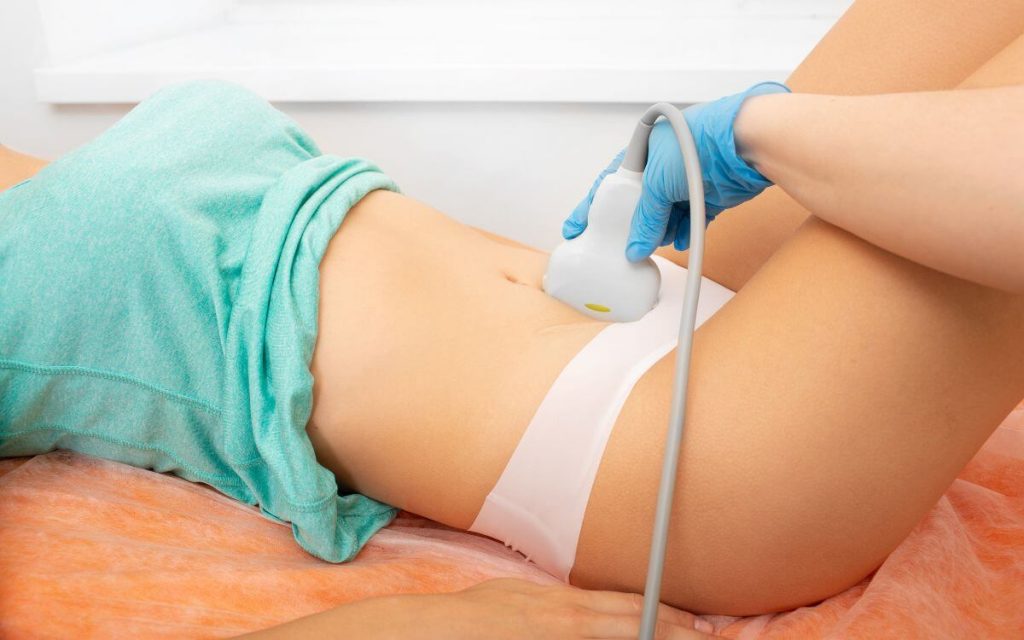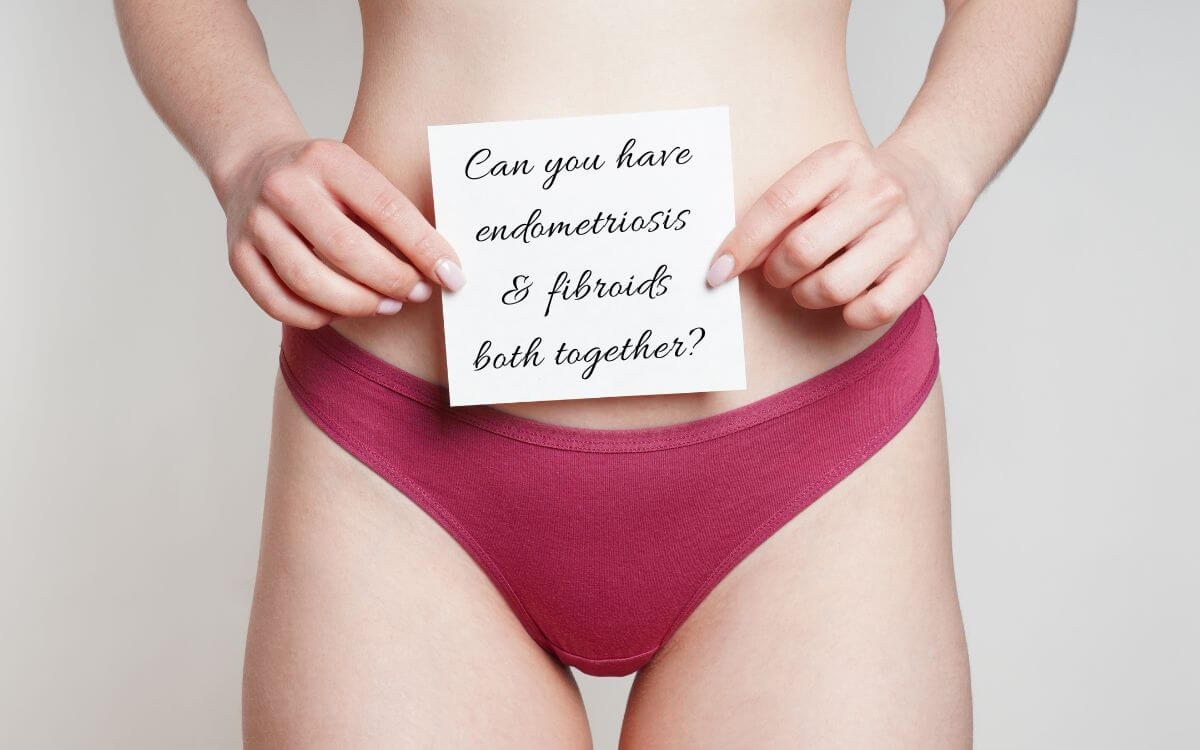Can you have both endometriosis and fibroids?
Yes. You can have both endometriosis and fibroids. My wife has them both, and many women have them together. And here’s why:
Endometriosis and fibroids occur together because they are hormone-related conditions. Both are more common in women who have excess estrogen but you can also have endometriosis without fibroids, or fibroids without endometriosis, depending on your individual hormonal makeup and whether you have other risk factors for either condition.
What is endometriosis?
Endometriosis is a chronic condition in which the tissue that is similar to the one that lines the inside of the uterus (the endometrium) grows outside of it. This can cause a lot of debilitating pain, heavy bleeding, and fertility problems.
Endometriosis symptoms are often worse during menstruation, and many women with the condition find that their pain improves when they reach menopause and their hormone levels change.
There are four types and four stages of endometriosis. My wife has the worst type, stage IV deep infiltrating endometriosis, and also created 3 endometriomas on her ovaries.
What are the symptoms of endometriosis?
The most common symptom of endometriosis is pelvic pain, particularly during menstruation. This pain can be mild to severe, and some women find that it interferes with their daily activities.
Other symptoms of endometriosis include:
- Heavy or irregular periods
- Pain during sex
- Infertility
- Anemia (low iron levels)
- Fatigue
- Gastrointestinal problems
If you want to learn more about endometriosis, I wrote an “Endo-Tool, Endometriosis for Men” e-Book.
You can get the 1st Chapter of the e-Book for FREE, and if you like it, you’ll get a Whopping 33% Discount on the Whole Book, plus discounts on other helpful tools. You have nothing to lose but a lot to gain!
The first chapter alone contains all the comprehensive medical knowledge about endometriosis, including:
- What is endometriosis?
- What are the symptoms?
- What causes endometriosis?
- What does endometriosis look like?
- What are the stages?
- What are the types?
- What is adenomyosis and how is it related to endometriosis?
- Why do some women develop severe endo and others don’t?
- Does endometriosis cause infertility?
- How is endometriosis diagnosed?
- Do types and stages affect the treatment?
- Recurrence of endometriosis after excision surgery.
FREE Chapter of “Endo-Tool”
Endometriosis e-Book for Men

What are fibroids?
Fibroids are benign (non-cancerous) tumors that grow in the uterine lining. They are caused by an overgrowth of the smooth muscle cells in the uterus. Fibroids can range in size from very small (pea-sized) to large (grapefruit-sized).
Fibroids can cause heavy bleeding, pain, fertility problems, and pressure on the pelvic organs. Other than that, they are not dangerous. However, if a fibroid grows very large, it can cause the uterus to become enlarged, which can lead to problems during pregnancy.
Many women with fibroids do not have any symptoms, but for some, the symptoms can be very severe. Fibroids are more common in African American women and women who are overweight or obese, however, my wife is fit, slim, and white, and she has it therefore it isn’t necessarily a norm.
What are the symptoms of fibroids?
The full symptoms of fibroids depend on their size, location, and number. Some women with fibroids do not have any symptoms at all.
The most common symptom of fibroids is heavy menstrual bleeding. Fibroids can also cause:
- Pelvic pain or pressure
- Anemia (low iron levels)
- Frequent urination
- Constipation
Why do endometriosis and fibroids occur together?
Endometriosis and fibroids share a common risk factor – excess estrogen. Estrogen is a hormone that helps to regulate the menstrual cycle. When there is too much estrogen in the body, it can cause an overgrowth of the endometrium (the lining of the uterus) and the development of fibroids.
Other risk factors for endometriosis include:
- Family history: If your mother or sister has endometriosis, you are more likely to develop the condition.
- Age: Endometriosis is most common in women in their 30s and 40s.
- Obesity: Women who are obese have a higher risk of developing endometriosis.
- Nulliparity: Women who have never given birth are more likely to develop endometriosis.
Risk factors for fibroids include:
- Family history: If your mother or sister has had fibroids, you are more likely to develop them.
- Age: Fibroids are most common in women in their 30s and 40s.
- Obesity: Women who are obese have a higher risk of developing fibroids.
- African-American race: African-American women are more likely to develop fibroids than women of other races.

Can endometriosis and fibroids occur separately?
- Can you have endometriosis without fibroids?
- Can you have fibroids without endometriosis?
Yes, although if you have endometriosis, you are more likely to develop fibroids. This is because both conditions are hormone-related and share common risk factors.
So, if you have endometriosis, it is important to be aware of the signs and symptoms of fibroids so that you can get early treatment if necessary. However, both conditions, even though estrogen-driven, can occur separately.
Can you have endometriosis without fibroids?
Yes. This is how my wife started. She was primarily diagnosed with endometriosis, her secondary condition is fibromyalgia disorder, and only three years later they found the fibroids.
Can you have fibroids without endometriosis?
Yes. Fibroids are more common than endometriosis, so it is possible to have fibroids without endometriosis because more women in the general population will have fibroids (between 20-50%) while only a smaller percentage of women will have endometriosis (between 6-10%).
Can they be prevented?
There is no sure way to prevent endometriosis or fibroids, but there are things you can do to reduce your risk. If you are overweight, losing weight may help to reduce your risk of fibroids and endometriosis. Eating a healthy diet and exercising regularly may also help to reduce your risk.
Endometriosis along with fibroids can make life quite difficult for a woman.
While there is no sure way to prevent either condition, maintaining a healthy lifestyle by eating right and exercising regularly can help reduce your risk.
If you are diagnosed with endometriosis or fibroids, there are treatment options available to help relieve your symptoms. Early diagnosis and treatment are important in order to prevent the progression of either condition.
The treatment.
There are several treatment options available for endometriosis and fibroids. The best course of treatment will depend on the severity of the symptoms and the underlying cause of the condition.
Treatment options for endometriosis include:
- Hormonal therapy: This can be used to help control the hormones that are causing the overgrowth of tissue. Birth control pills, patches, or rings, as well as progesterone shots or pills, can be used to help reduce the symptoms of endometriosis.
- Surgery: In some cases, surgery may be necessary to remove the endometrial tissue that is growing outside of the uterus. This can be done through a laparoscopy (minimally invasive surgery) or a laparotomy (open surgery).
- Pain medication: Over-the-counter or prescription pain medication can be used to help relieve pain associated with endometriosis.
Treatment options for fibroids include:
- Hormonal therapy: This can be used to help control the hormones that are causing the growth of the fibroids. Birth control pills, patches, or rings, as well as progesterone shots or pills, can be used to help reduce the symptoms of fibroids.
- Surgery: In some cases, surgery may be necessary to remove the fibroids. This can be done through a hysteroscopy (minimally invasive surgery) or a hysterectomy (removal of the uterus).
- Pain medication: Over-the-counter or prescription pain medication can be used to help relieve pain associated with fibroids.
Conclusion.
Endometriosis and fibroids are both estrogen-driven conditions that can occur separately or together. There is no sure way to prevent either condition, but maintaining a healthy lifestyle by eating right and exercising regularly can help reduce your risk.
The treatments are available, and even though you can fully remove fibroids, endometriosis is the condition that seems to come back even with the removal of endometrial tissue from outside of the uterus.
If you are diagnosed with endometriosis or fibroids, there are treatment options available to help relieve your symptoms. Early diagnosis and treatment are important in order to prevent the progression of either condition. If you are experiencing any symptoms that concern you, please consult with your doctor.
FREE Chapter of “Endo-Tool”
Endometriosis e-Book for Men



About Me
Hi, I’m Lucjan! The reason why I decided to create this blog was my beautiful wife, who experienced a lot of pain in life, but also the lack of information about endometriosis and fibromyalgia for men…
